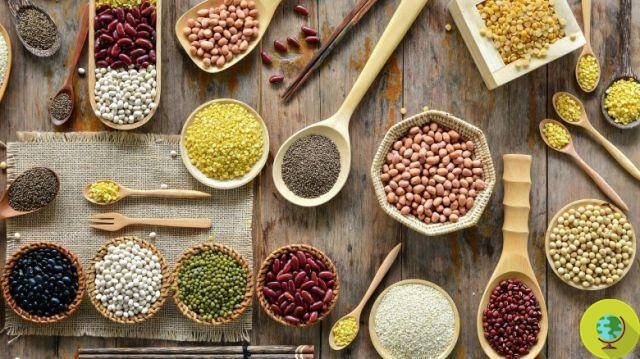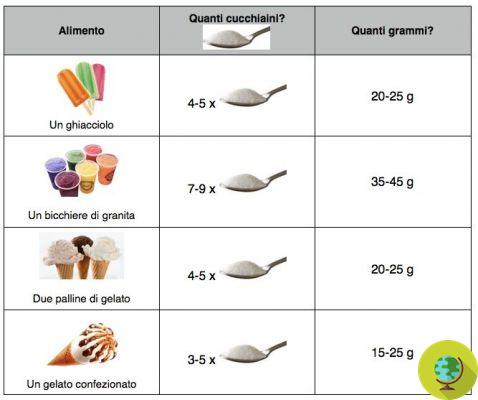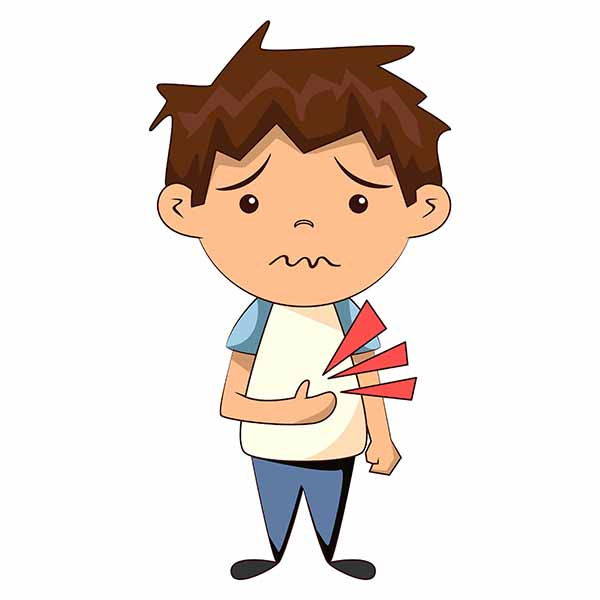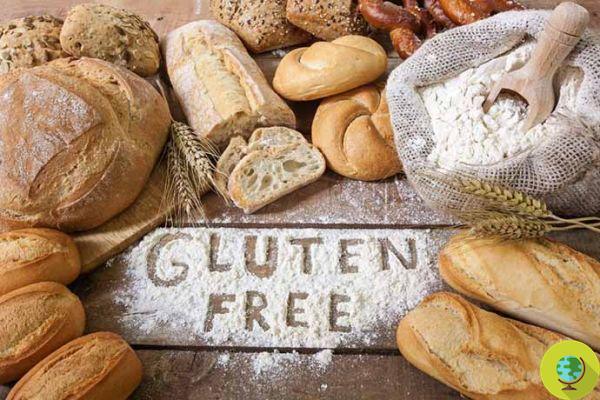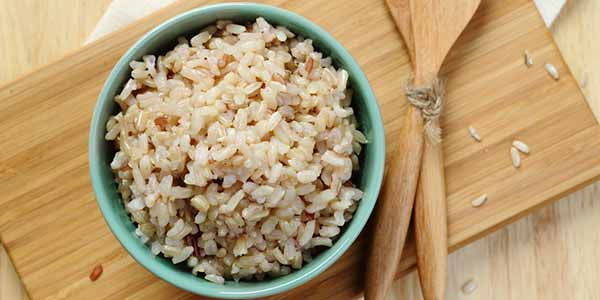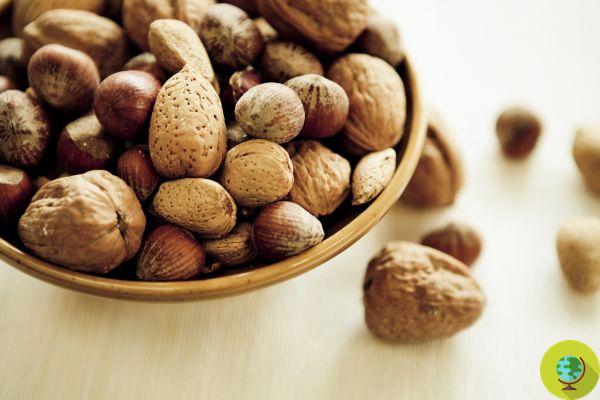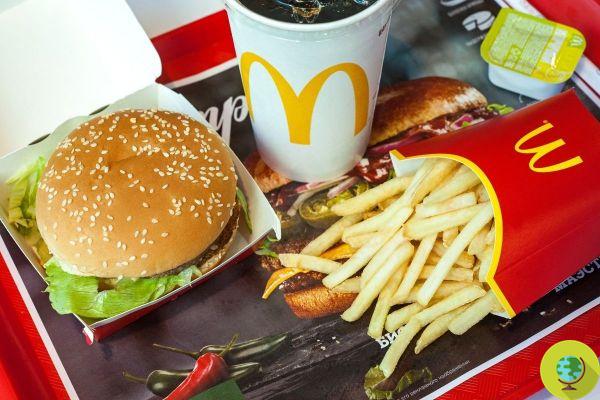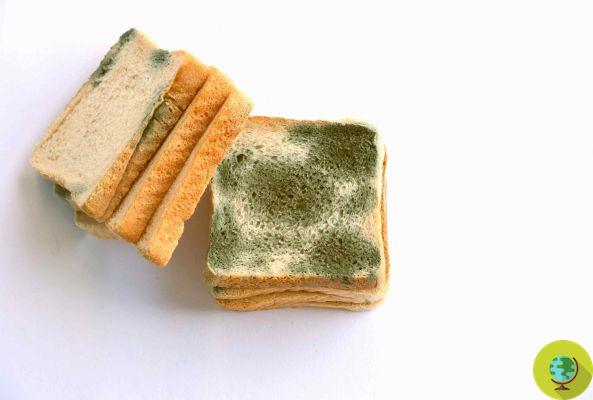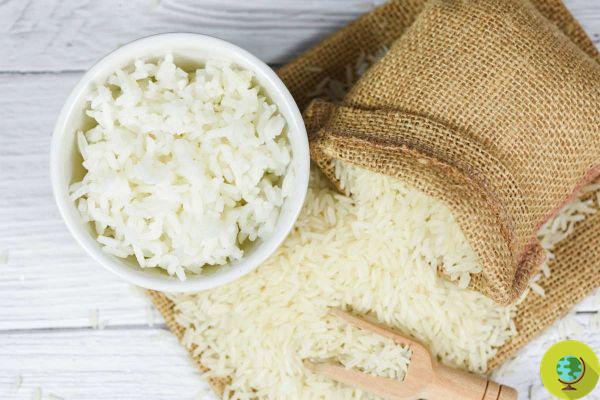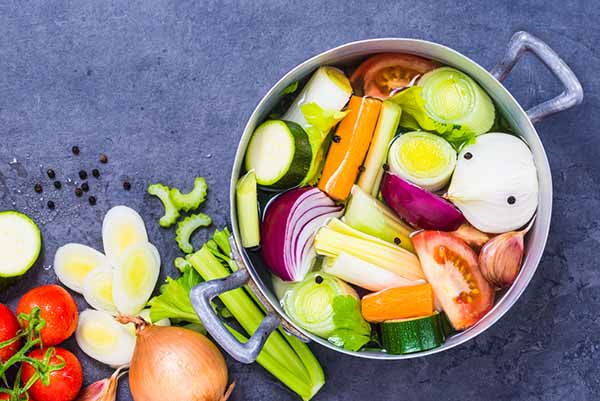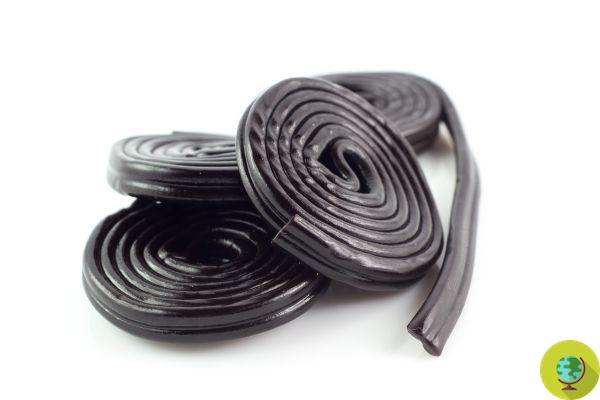The Zone Diet is a diet created by the American biochemist Barry Sears, who became very famous in the 90s but is still followed and appreciated today. But how does this diet work, what can you eat and what are the possible contraindications?
Don't store avocado like this: it's dangerousLa zone diet is a diet created by the American biochemist Barry Sears, which became very famous in the 90s but is still followed and appreciated today. But how this diet works, what you can eat and what, if any contraindications?
The Zone Diet is a quite complex weight loss system which is based on the biochemical theories of Sears who initially aimed to treat cases of type 2 diabetes or heart patients but who later noted how the benefits of this diet could also help weight loss and increase energy. How? Acting on a hormonal level with an ad hoc diet.
It is a food program recommended for those who want to increase their physical performance but at the same time (according to the creator of this diet from which many deviate) also suitable for those who want to take care of their health by eating healthy.
Let's find out now the principles on which the Zone Diet is based.
Read also: BEST DIETS 2015: THE BEST AND WORST DIETS OF THE MOMENT
Index
HOW THE ZONE DIET WORKS
The first thing to know about the Zone Diet is what Sears means by "zone". This term could mistakenly suggest a type of diet that aims to lose weight in a specific area of the body. In reality this has nothing to do with it, the "zone" in pharmacological terms is the right amount of medicine that is necessary to be effective. According to Sears the drug par excellence we have at our disposal is food and this we must use like a medicine by dosing types, quantities and times of "administration" with the aim of obtaining the maximum health at the psychophysical level. There "Zone" is therefore the optimal condition in which our body can work at its maximum efficiency.
It is a diet that is not interested in evaluating calories but rather considers important to regulate hormone production. Specifically, with the right food you want to stimulate the production of eicosanoids, hormones that improve metabolism and body functions.
This diet identifies a precise ratio in the daily intake of macronutrients or carbohydrates, proteins and fats to be divided respectively at each meal in the percentages of: 40% carbohydrates, 30% proteins, 30% fats.
It is also essential to know the foods that stimulate insulin and reduce their consumption. Sears reports foods by dividing them into favorable, unfavorable or to be limited based on the glycemic index they have. Specifically, the method devised by Sears allows keep insulin production in an optimal range to make sure that the body's metabolism is exploited to the maximum. As for carbohydrates, this is the breakdown:
Favorable carbohydrates
• all vegetables except potatoes, squash, cooked carrot, beets
• all fruit except bananas, mangoes, papaya, watermelon, persimmon, dried grapes, dried dates and dried figs
• peeled oats
• red wine (in moderation)
Carbohydrates to limit
• cereals and derivatives (bread, pasta, rice, etc.)
• fruit juices
• previously excluded fruit and vegetables
Carbohydrates to avoid
• industrial sweets
• alcoholic beverages
• sugary drinks
During the day, to keep hormone production stable, food must be divided into the classics 3 main meals, plus 2 snacks (they too must respect the proportion between nutrients) of which one, in an unusual way, should be done about half an hour before going to sleep. It is also essential to never let more than 5 hours go by without eating.
The diet is then associated with the use of supplements Omega 3,physical activity it's a daily stress control (useful to reduce cortisol).
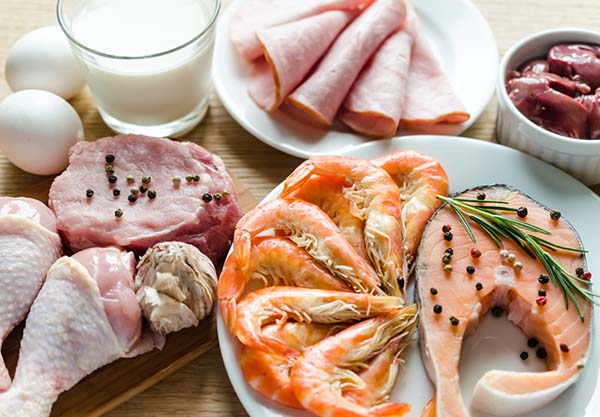
THE SYSTEM OF BLOCKS
The most difficult thing is the calculations to be done in order to understand how to structure one's own zone diet that is customized according to the individual's lean mass and his being more or less lively or sedentary. The food requirement of each person is determined starting from calculation of daily proteins but obviously the other nutrients must also be taken into consideration according to the so-called "blocks”Designed by Sears.
Each block consists of 3 mini-blocks which represent the 3 macronutrients (proteins, carbohydrates and fats). The mini block of proteins is estimated at 7 grams that of carbohydrates in 9 grams while for fats 3 grams are calculated.
While the snacks are made up of a single block, the main meals are made up according to the characteristics of the person following the diet, with different blocks. The necessary proteins are calculated according to the scheme: lean mass in kg x physical activity index. This way you get to know the amount of protein in grams. This is then divided by 7 (each block of protein is in fact equal to 7 g) thus obtaining the number of blocks needed every day. You cannot go down never under 11 blocks to avoid that the diet is too low-calorie.
A somewhat cumbersome system and not exactly easy to understand and easily for a normal person who goes on a diet, it is always better to rely on a professional if you want to try to lose weight with the zone diet. Alternatively there is the simpler nutrient calculation with the palm system: at each meal, foods containing proteins of the size of the palm of one's hand should be consumed, carbohydrates corresponding to twice those of proteins if in the favorable group or in equal quantities if unfavorable.
To recap the fundamentals of the Zone Diet I'm:
• Subdivision of each meal into 40% carbohydrates, 30% proteins, 30% fats
• Eat 3 main meals and 2 snacks (including one half an hour before going to bed)
• Never let more than 5 hours go by without eating
• Have breakfast within half an hour of returning
• Choose foods with a low glycemic index
• Cut down on saturated fat
• Learn to manage stress
• Do moderate physical activity
• Integrate Omega 3 with an EPA: DHA ratio of 2: 1.
ZONE DIET: WHAT TO EAT
The zone diet allows you to eat different foods, which are of fundamental importance fruits and vegetables which must be consumed in large quantities to ensure that the insulin is stimulated gradually without incurring spikes and dips. Much protein intake is also important which must come mainly from white meats, fish, eggs and legumes.
I carbohydrates instead they are severely limited because of their glycemic index while as regards fats, those of vegetable origin such as extra virgin olive oil, walnuts or avocado are preferred.
Some foods are banned or severely restricted in the Zone Diet. We speak in particular of sweets, cereals and other products with a high glycemic index such as pasta, rice, bread, refined cereals but also saturated fats, caffeine and alcohol.
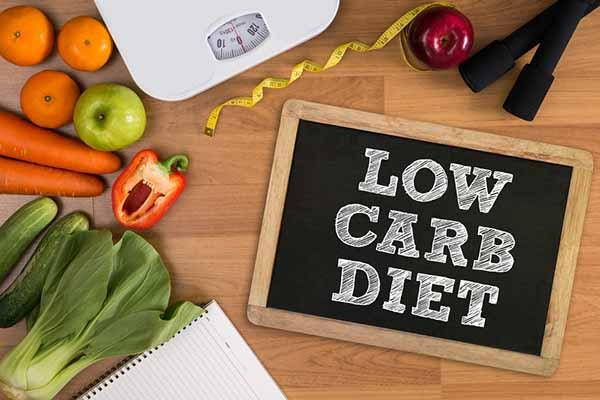
So to recap recommended foods I'm:
• Vegetables (except potatoes, carrots and beets)
• Fruit (except for sweet ones such as bananas, figs, grapes)
• White meat
• Fish
• Egg
• Legumes
• Extra virgin olive oil
• Walnuts, hazelnuts, pine nuts
• avocado
• fish oil
Foods not recommended or to be strongly limited are:
• Pasta
• Bread
• Rice
• Refined cereals
• Sugar
• Sweets
• Fruit juices
• Sodas
• Alcohol
• Caffeine
• Fat cheeses
• Red meats
EXAMPLES
As we said the Zone Diet is a type of diet to be customized according to individual characteristics and to the more or less eventful or sedentary life that is led and to be planned through the “blocks” scheme. However, we report an example of a day in which this diet is followed:
Breakfast: yogurt, fresh or dried fruit
Snack: fresh or dried fruit among those allowed plus yogurt, hard-boiled eggs, bresaola, turkey breast or fresh ricotta.
Lunch: chicken breast with mixed vegetables or salad dressed with oil and vinegar
Price: fish and salad or legumes, tofu or omelette with other vegetables. You can add some cereals such as spelled, barley, etc.
Snack (half an hour before sleeping): fresh fruit among those allowed or dried plus yogurt, hard-boiled eggs, bresaola, turkey breast or fresh ricotta.
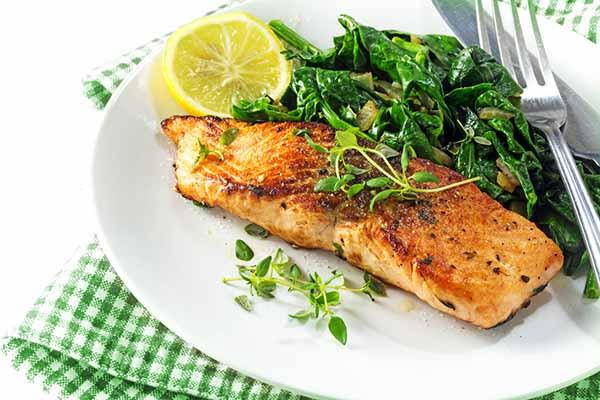
CONTRAINDICATIONS
The zone diet is excessively high protein and therefore it can bring with it, especially if continued for a long time, all the disadvantages of a diet that is too unbalanced in favor of proteins, in particular the overload of the kidneys and liver with consequent problems. Most nutritionists then agree in considering this diet as well as incorrect from a nutritional point of view also not very effective, not all of them believe that Dr. Sears' hormonal theories are well founded.
Read also: HYPERPROTEIC DIET: RISKS AND CONTRAINDICATIONS
THE OPINION OF THE NUTRITIONIST
We asked ad Lavinia Triberio, nutritionist biologist expert in Food and Human Nutrition, what do you think of the Zone Diet. Here's what he told us:
“The Zone Diet regards food as the most powerful drug available. Therefore, for those who follow this method, it is indispensable to respect the predefined quantities and eating times. This consideration does not differ much from a more simplistic vision of a balanced diet to which we should refer for a correct life in health. But what has made the zone diet very famous is its great effectiveness in combating overweight, setting goals for each person "
By analyzing the various objectives, let's see what can be considered an advantage and what not. The goals of the Zone Diet, founded by biochemist Barry Sears, lead to:
• evaluate this diet as a nutritional therapy to ensure a good state of health
• moderate blood sugar
• optimize the insulin-glucagon ratio
• ensure the right ratio of inflammatory and anti-inflammatory eicosanoids.
“Analyzing the final objectives one by one, we can deduce a willingness on the part of the creator to use food in exactly the same way as most nutrition experts use it. But by examining the methodology with which we want to achieve these results, we find some critical points ".
What are they then the disadvantages of this diet?
“One of the fundamental principles on which the Zone Diet is based is that by balancing the three macronutrients (carbohydrates, proteins, fats) an optimal physical and mental state can be achieved. The intake of proteins and carbohydrates, in fact, leads to a release of the hormone glucagon, which counteracts the rise in blood levels of insulin. This view is not only used in this diet therapy methodology, but used by many nutrition specialists, since insulin tends to be kept low to avoid an increase in fat storage, and the production of inflammatory eicosanoids, which increase the risk of atherosclerotic pathologies. The intake, on the other hand, of fats, mainly unsaturated, is considered essential to counteract dyslipidemias. This assertion is certainly amply validated by the literature. The criticality of the balance of macronutrients is precisely from the energy point of view. According to this diet, in fact, the right portions of macronutrients should be taken in every meal, and their ratio must be 40% carbohydrates, 30% proteins, 30% fats. Respecting this rule, the energy intake of this diet is always too low, even compared to a low-calorie Mediterranean diet. This disadvantage is further amplified in subjects who carry out high intensity and prolonged sports, causing in some cases a decrease in muscle mass. Therefore not doing an analysis of the basal metabolism and energy needs of each individual, it is always poorly balanced, and not very subjective. Furthermore, it must be remembered that the insulinemic release is also given by the amino acids of the proteins and by the fatty acids of the lipids, and not only by the carbohydrates. Assuming all this with the Zone Diet, it suggests that the decrease in insulin levels is not attributable to the balance of macronutrients, but rather to portion moderation. Another criticality is given by thedouble intake of proteins, compared to those indicated in the LARN. This does not allow to prepare this diet for clinical nutrition in cases of kidney or liver disease. Furthermore, in the case of type 2 diabetes mellitus, the high protein intake is an additional risk factor for the degeneration of renal function related to chronic hyperglycaemia. Furthermore, the zone diet also indicates the consumption of fiber, vitamins and mineral salts in abundance to achieve its goals. This consumption obviously prefers fruits and vegetables with a low glycemic index to gradually stimulate insulin. On the choice of foods with a low glycemic index and a large amount of fiber, it is useless to underline the great protective power it can give to counter various pathologies, and the prebiotic function of the fiber that prevents the onset of colon cancer. On the undefined amount of fruit and vegetables instead, the second criticality of the diet is based. A poorly controlled intake of fruit and vegetables leads to an often excessive intake of fiber and anti-nutritional molecules; despite the many benefits that can be drawn from the abundance of fruit and vegetables, the excess of the aforementioned molecules can lead to side effects such as: diarrhea and reduction in the absorption of certain mineral salts which are very important for the body. Furthermore, this diet provides that no more than 5 hours should elapse between meals. If there is more time, you need to have a snack. In this way, the day consists of at least 3 main meals and 2 snacks. This methodology can have two opposite effects. The first is that this frequency can cause a quicker abandonment of the diet, since it is not possible to change the lifestyle following such an important commitment; the second effect can instead determine a net change in the subject's daily habits, which will lead him to maintain these rules even after the diet. Of course, the second effect is what we hope for ".
And so a diet advisable or not?
"The zone diet for "laymen" is very complex, and for this reason it is very easy to make mistakes, which could be very harmful to health. For this reason, in case you want to follow the zone diet, I always recommend consult a nutrition professional to avoid mistakes and obtain the right supplements and precautions to be applied according to one's nutritional needs ".




